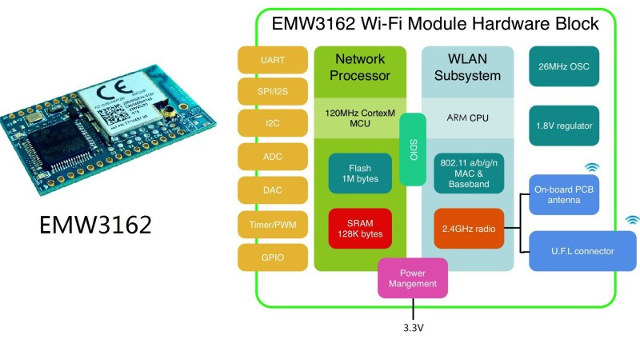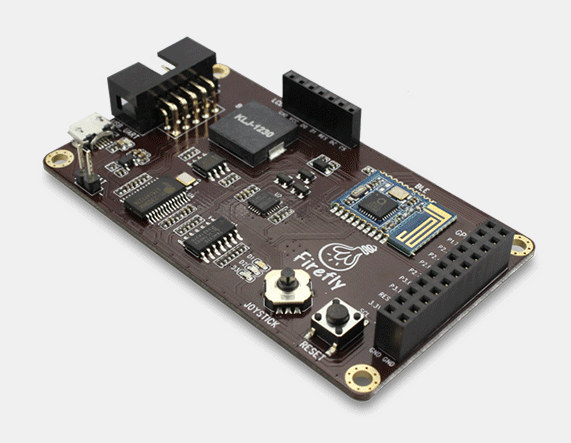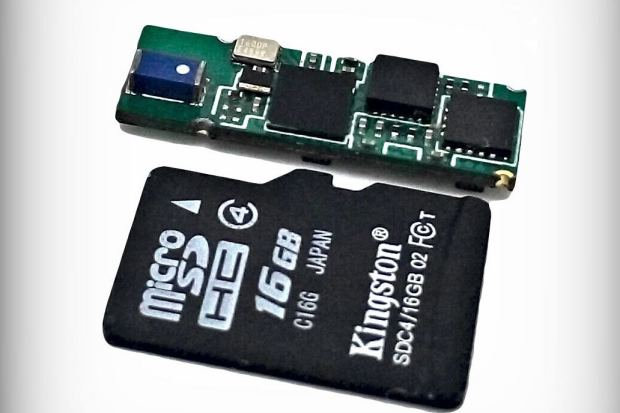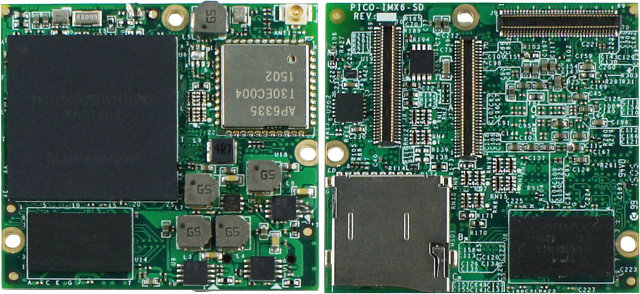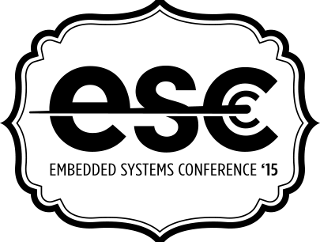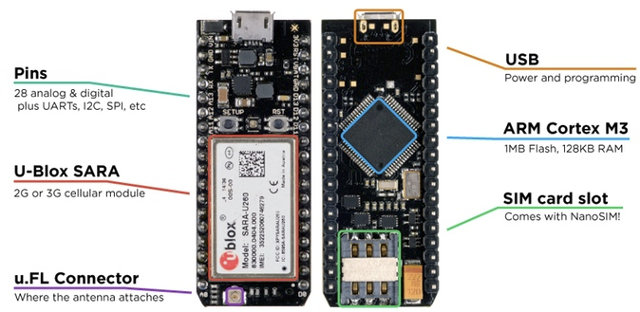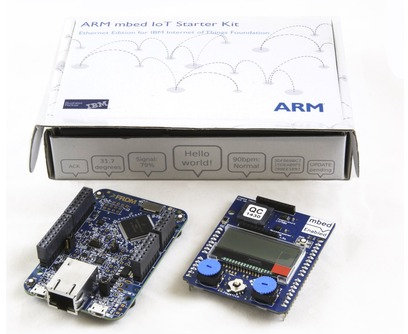You can’t beat ESP8266 Wi-Fi modules on price to add Wi-Fi to your IoT projects, but Hackaday found a new Wi-Fi module by Shanghai MXCHIP Information Technology that sells for $10 on Seeed Studio or Amazon US, that should be better suited to battery operated project thanks to a lower power consumption. EMW3162 also features a more powerful STM32F205 cortex M3 micro-controller, as well as more I/Os than ESP8266. Specifications for EMW3162 Wi-Fi module: MCU – STM32F2 Cortex M3 MCU @ 120 MHz with 128KB RAM, 1MB flashOn Wi-Fi connectivity 802.11b, 802.11g, 802.11n (single stream) on channel 1-14 @ 2.4GHz WEP, WPA/WPA2 PSK/Enterprise (hardware encryption) Transmit power: 18.5dBm@11b; 15.5dBm@11g; 14.5dBm@11n MIN Receiver Sensitivity: -96 dBm Max Data rate: 11Mbps@11b; 54Mbps@11g; 72Mbps@11n HT20 Wi-Fi modes: Station, Soft AP and Wi-Fi direct Advanced 1×1 802.11n features: Full/Half Guard Interval, Frame Aggregation, Space Time Block Coding (STBC), Low Density Parity Check (LDPC) Encoding […]
Firefly introduces FireBLE Bluetooth Low Energy Board
So just as today I wrote about XBAND BLE Sensor board, the makers of Firefly-RK3288 also announced their own Bluetooth Low Energy board aptly named FireBLE, and also integrating a 6-axis gyroscope and accelerometer, but instead of being based on Nordic or Cypress, the company went with an NXP BLE chip. FireBLE board specifications: SoC – NXP QN9021 ARM Cortex M0 MCU @ 32MHz with 94KB ROM (protocol stack), 64 KB SRAM, 128KB flash Bluetooth – BT 4.0 single mode. Central and peripheral mode with up to 8 simultaneous connections. Sensors MPU-6050 3-axis gyroscope and 3-axis accelerometer with an on-board Digital Motion Processor (DMP) capable of processing 9-axis motion fusion algorithms. Battery and temperature sensor USB – micro USB port for power and programming Expansion – 3 expansion headers with access to SPI, UART, I2C, GPIO, and PWM, as well as OLED display interface. Debugging – JTAG, support SWD online […]
XBAND is a Tiny $10 Bluetooth Low Energy Sensor Module (Crowdfunding)
ZX Tek‘s XBAND is a board about half the size of a micro SD that comes with a Bluetooth LE radio and a 6-axis MPU6500 motion sensor that can be integrated into wearables and IoT applications such as a remote controlled robot with a camera., a wireless smart light-bulb, and iBeacon device and so on. There seems to be two versions of the module XBAND 061-N51822 and XBAND 1018-CY8C4247 with the following specifications: SoC (one or the other) Nordic Semiconductor nRF51822 ARM Cortex M0 MCU @ 16 MHz with 256KB Flash, 16KB RAM, and Bluetooth Low Energy support Cypress PSoC4 BLE core ARM Cortex M0 MCU @ 48 MHz with 128KB flash, 16KB RAM, and Bleutooth Low Energy support Bluetooth – 4.0/4.1 with high gain ceramic chip antenna Sensors – On-board 6-axis MPU6500 motion sensor + an extra configurable sensor (not idea what that is…). Connectors – Board-to-board connectors with […]
TechNexion Introduces Intel Edison Compatible PICO-iMX6 SoM and DWARF Board
Intel Edison is a board made for wearables featuring an SoC with Intel Atom and Quark CPU cores. TechNexion, an embedded systems company based in Taiwan, has decided to make a mechanically and electrically compatible system-on-module featuring Frescale i.MX6 Solo or Duallite ARM Cortex A9 processor called PICO-iMX6. The company is also providing a PICO-DWARF baseboard that’s both compatible with PICO-iMX6 SoM and Edison board. DWARF stands for “Drones, Wearables, Appliances, Robotics and Fun”, so that pretty much explains what the platform is for. PICO-iMX6 System-on-Module Two version of the modules are available: PICO-iMX6-SD and PICO-iMX6-EMMC, the former with a micro SD slot for storage, and the latter a 4GB eMMC. Both share the followings specifications: SoC – Freescale i.MX6 Solo / Duallite single/dual core ARM Cortex A9 @ 1Ghz with Vivante GC880 3D GPU and Vivante GC320 2D GPU (Composition) System Memory – 512MB or 1GB DDR3 Storage – […]
Embedded Systems Conference 2015 Schedule – May 6-7, 2015
The Embedded Systems Conference took the name “Design West” for a couple of years, but this year, there’s no mention of Design West, and the Embedded System Conference 2015 will take place in Boston, MA, US on May 6-7, 2015. The 2-day event will have a demo hall, and well as sessions divided into 8 tracks: Connected Devices and the IoT Embedded Software Design Hardware: Design, I/O and Interfacing Prototyping Embedded Systems Design Software: Design, Languages, & Quality Fantastical Theater Teardowns The full schedule has now been posted, and I’ll build a virtual schedule with some of the sessions provided. Wednesday May 6, 2015 8:00 – 8:45 – Understanding Google/Nest Thread by Michael Anderson, Chief Scientist, The PTR Group, Inc. The IoT will live or die based on its connectivity. In examining existing wireless protocols, Google/Nest found most of them lacking. In order to address the needs for low-power wireless […]
Spark Electron Cellular Module for M2M Projects Comes with a $3 Monthly Data Plan (Crowdfunding)
Spark IO started with Spark Core, a tiny Wi-Fi module, followed with Spark Photon is a cheaper, faster, and tinier Wi-Fi module, and now the company is launching Spark Electron to bring cellular connectivity to hobbyist projects at an affordable cost and small form factor. Spark Electron specifications: MCU – ST Micro STM32F205 ARM Cortex M3 microcontroller @ 120 MHz with 1MB Flash, 128K RAM Cellular Connectivity – U-Blox SARA U-series (3G) or G-series (2G) modem + NanoSIM card slot + u.FL connector for Antenna Headers – 36 pins with 28 GPIOs (D0-D13, A0-A13), plus TX/RX, 2 GNDs, VIN, VBAT, WKP, 3V3, RST USB – micro USB port for power and programming Misc – Setup and reset buttons, LED Dimensions – 5.08 cm x 2.03 cm x 0.76 cm (1.27 cm including headers) The board can be programmed with Wiring (Arduino’s programming language), C/C++, or ARM assembly. It’s longer than Spark […]
Freescale Kinetis based Mbed IoT Starter Kit Ethernet Edition Connects to IBM IoT Cloud
ARM, IBM and Freescale have jointly announced Mbed IoT Start Kit – Ethernet Edition at Embedded World 2015 that consists of a Freescale Kinetis Cortex M4 mbed-enabled development board and a sensor IO application shield that interface with IBM Bluemix cloud platform. Freescale FRDM-K64F Freedom development board specifications: MCU – Freescale Kinetis K64 (MK64FN1M0VLL12) ARM Cortex M4 MCU @ 120 MHz with 1 MB flash memory, 256 KB RAM External Storage – SDHC slot Connectivity – 10/100M Ethernet USB – Dual role USB interface with micro-B USB connector Sensors – FXOS8700CQ accelerometer and magnetometer Headers – Arduino R3 compatible I/O connectors Misc – RGB LED, two user push buttons Power Supply – OpenSDAv2 USB, Kinetis K64 USB, and external source The board also features a programmable OpenSDAv2 debug circuit supporting the CMSIS-DAP Interface software that provides a mass storage device (MSD) flash programming interface, or a CMSIS-DAP debug interface, or […]
Ingenic Halley is a $20 Linux based IoT Board with Wi-Fi and Bluetooth 4.1 Connectivity
Ingenic introduced Newton2 platform for wearables a few months ago, and the kit with an AMOLED display, camera board and other accessories should go on sale in March for $80. In the meantime, the company has also been working on a lower cost internet of things (IoT) module and development kit powered by Ingenic M150 with Wi-Fi and Bluetooth 4.1 targeting smart appliances, Wi-Fi speakers, smart toys, industrial control applications, and other smart devices. Halley IoT module specifications: SoC – Ingenic M150 XBurst (MIPS) single-core processor up to 1.0GHz with 128MB LPDDR on-chip, 2D graphics GPU, VPU supporintg 720p30 H.264 video decoding. Storage – 8MP SPI NOR flash (GIGA GD25LQ64) Connectivity – Wi-Fi 802.11 b/g/n and Bluetooth 4.1 via Broadcom 43438 chip. Expansion headers (2mm pitch) 8-bit parallel LCD interface, Audio – MIC, Line-In and headphone, 2x I2S, SD card (MMC interface) USB device 2.0, and USB host 1.1 3x […]


